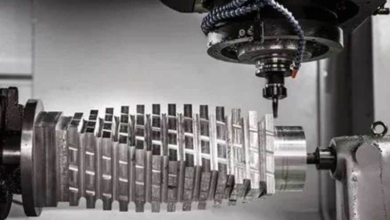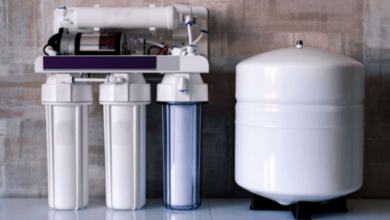Guide to Choosing the Right Restaurant Management System in 2025

Running a restaurant in 2025 is no longer just about great food; it’s about flawless operations, happy customers, and smart, data-driven decisions that drive profits. A restaurant management system isn’t just a tool; it’s the backbone of a modern, efficient, and competitive restaurant. From a small café to a busy bistro or a multi-location chain, the right system can streamline operations, eliminate costly errors, and turn first-time diners into loyal customers.
And the numbers make it clear: the U.S. market for restaurant management systems is projected to grow at a remarkable 14.1 % CAGR from 2025 through 2030, proving just how essential these systems have become.
In this blog, we’ll uncover the must-have features you need to look for to choose the perfect system for your restaurant, so you can stay ahead, maximize efficiency, and grow your bottom line.
What is a Restaurant Management System?
A restaurant management system (RMS) is a comprehensive solution that encompasses the tools and processes needed to run a restaurant efficiently while delivering excellent customer service. It serves as an umbrella term for various software and management functions designed to streamline operations.
Key components of a restaurant management system can include:
- Point-of-Sale (POS) System: Handles order entry and payment processing.
- Payment Processing: Supports multiple payment methods, including credit and debit cards, mobile wallets, and contactless payments.
- Inventory Management: Tracks stock levels, monitors food costs, and helps reduce waste.
- Employee Scheduling: Manages attendance, shifts, and time-off requests.
- Payroll and Accounting: Oversees employee payroll, labor costs, cash flow, and generates sales reports.
These are just a few examples of the software modules a restaurant management system can offer. Choosing a solution that integrates these functions can significantly simplify how you manage and operate your restaurant.
Key Features to Look For in a Restaurant Management System
Not all systems are created equal. Choosing the right one means understanding your needs and knowing which features are essential. Here’s what to look for:
1. Point-of-Sale (POS) Integration
A reliable restaurant management system starts with a strong POS solution. Your POS isn’t just a cash register—it’s the backbone of your restaurant operations. Look for features like:
- Fast and intuitive order processing: Reduce errors and speed up service.
- Multiple payment options: Credit cards, mobile wallets, and contactless payments.
- Integration with online orders and delivery platforms: Sync your system with apps like DoorDash, Uber Eats, or Grubhub.
- Real-time sales reporting: Gain insights into best-selling items and peak hours.
POS integration ensures that every order, payment, and discount is recorded accurately, providing the foundation for other management functions like inventory and analytics.
2. Inventory and Supply Chain Management
Inventory mismanagement is a major challenge for restaurants, often leading to food wastage and lost revenue. The right restaurant management system should include robust inventory tracking features:
- Real-time stock updates: Know instantly when ingredients are running low.
- Supplier integration: Automatically reorder stock from preferred vendors.
- Waste tracking: Identify patterns in overused or expired ingredients.
- Cost analysis: Understand your food cost per dish and adjust pricing or menu items accordingly.
By automating inventory management, restaurants can reduce waste, save money, and maintain consistent quality.
3. Employee Scheduling and Labor Management
Labor costs make up a significant portion of restaurant expenses. Efficient staff scheduling is critical for reducing costs and maintaining smooth operations. Look for a system that offers:
- Shift scheduling and automation: Plan staff shifts based on historical sales and predicted foot traffic.
- Time tracking and attendance: Monitor employee hours and manage payroll easily.
- Communication tools: Notify staff of schedule changes instantly through mobile apps or email.
A system that streamlines labor management not only saves time but also ensures optimal staffing levels, reducing overstaffing or understaffing issues.
4. Customer Relationship Management (CRM)
In 2025, personalized experiences are a key differentiator. A restaurant management system with CRM capabilities helps you understand and engage your customers better:
- Guest profiles: Track customer preferences, order history, and special occasions.
- Loyalty programs: Encourage repeat visits with points, rewards, or discounts.
- Targeted promotions: Send personalized offers via email or SMS.
- Feedback collection: Gather reviews to improve service quality.
CRM integration allows restaurants to turn casual visitors into loyal patrons while enhancing the overall dining experience.
5. Online Ordering and Delivery Management
The rise of food delivery and takeout has made online ordering a must-have feature. Your restaurant management system should simplify online sales by offering:
- Integrated online ordering platforms: Receive orders directly into your system from your website or delivery apps.
- Order tracking: Ensure accurate preparation and timely delivery.
- Automated invoicing: Generate bills instantly and manage digital payments efficiently.
- Menu management: Update menus and prices in real-time for online platforms.
A seamless online ordering process boosts revenue, reduces errors, and enhances customer satisfaction.
6. Analytics and Reporting
Data-driven decisions are essential for profitability. A robust restaurant management system provides actionable insights into your operations:
- Sales trends: Identify peak hours, popular dishes, and slow-moving items.
- Financial reports: Monitor revenue, expenses, and profit margins.
- Inventory insights: Track usage patterns and minimize wastage.
- Customer analytics: Understand demographics and preferences to refine marketing strategies.
These insights allow restaurant owners to optimize operations, control costs, and plan for future growth with confidence.
7. Mobile and Cloud Accessibility
In 2025, mobility and flexibility are no longer optional. Restaurants need systems that are cloud-based and accessible on mobile devices:
- Remote access: Monitor operations, sales, and inventory from anywhere.
- Mobile POS: Enable staff to take orders or process payments tableside.
- Automatic updates: Ensure you always have the latest features without manual installation.
Cloud-based solutions also provide better security and data backup, reducing risks associated with on-premise systems.
8. Ease of Use and Scalability
Even the most feature-rich restaurant management system is ineffective if your team struggles to use it. Look for:
- Intuitive interface: Easy navigation reduces training time and errors.
- Customizable dashboards: Focus on metrics that matter most to your restaurant.
- Scalability: Supports growth, whether adding more locations or expanding services.
- Third-party integrations: Connect with accounting software, marketing tools, or delivery platforms.
Ease of use ensures quick adoption by your staff, while scalability future-proofs your investment.
See also: The Rise of Real Estate Tech in the UAE
How to Choose the Right System for Your Restaurant
With so many features available, it’s easy to feel overwhelmed. Here’s a simple approach to help you choose the best restaurant management system:
1. Identify Your Needs: Start by listing the challenges you face in your restaurant. Do you struggle with inventory management, employee scheduling, or online orders? Knowing your pain points will help you focus on systems that solve your specific problems.
2. Consider Your Restaurant Size and Type: A fine-dining restaurant may require advanced reservation and table management features, while a fast-casual eatery might prioritize POS speed and online ordering. Choose a system that aligns with your restaurant type and scale.
3. Evaluate Usability: A system is only useful if your team can use it efficiently. Look for intuitive interfaces, easy onboarding, and responsive customer support.
4. Compare Costs: Pricing models vary: some systems charge per user, per location, or via a flat monthly fee. Consider your budget and ensure that the ROI justifies the investment.
5. Check for Scalability: Your restaurant may expand in the future. Choose a system that can scale with your business, add new locations, and support additional staff without complications.
6. Read Reviews and Case Studies: Look for real-world feedback from restaurants similar to yours. Case studies can highlight how a system solves specific operational challenges and improves profitability.
The Bottom Line
Choosing the right restaurant management system in 2025 is more than just picking software; it’s about selecting a solution that aligns with your restaurant’s goals, scale, and workflow. The right system integrates POS, inventory, staff management, CRM, and analytics while offering cloud accessibility, security, and ease of use.
Investing in a system that ticks all these boxes will not only simplify your daily operations but also drive revenue growth, reduce costs, and enhance the dining experience for your customers.
When evaluating options, consider your restaurant’s specific needs, compare features, and don’t hesitate to request demos to see the system in action. The right choice today will set the foundation for efficiency, profitability, and growth for years to come.



